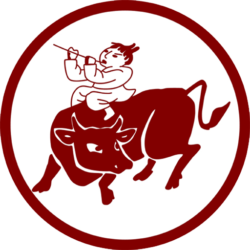Most anatomy is taught intellectually or passively. This means that a person knows where a structure is and can even touch it. But this doesn’t mean that they have an inner sense of that part of their body – they perceive it passively rather than it being an active part of their sense of self.
Experiential Anatomy aims to give you an inner experience of your anatomy. This doesn’t necessarily mean that you can control each part. But it does mean that you can listen to the messages that the organs, bones, muscles and fascia are continually giving. The body becomes a real resource of wisdom, rather than an appendage imperfectly controlled by the mind.
This changes the politics of the self. Most of us in modern first world cultures see the body as something that should do what it’s told. Our decision maker is the conscious mind and we are not taught to listen to the messages that the body contributes unless the sensations are painful. Even in that case, we tend to take pain killers and override the message because the pain is seen as an interruption to the instructions that the mind is giving to the body rather than an important bit of information. If the pain persists, we go to a therapist or a doctor to have it ‘fixed’. We still don’t know how to understand the communication that the body is making through the pain. Politically, this means that our self is an autocracy. The mind is the ruler and the body is told what to do by the mind, which doesn’t take the body into account when making decisions or choosing what to do. If the body is vulnerable it is seen as a failing to be fixed rather than a significant communication.
Experiential Anatomy helps you to listen to the intelligence of the body. Each part of us can be seen as a separate, intelligent, active agent that can contribute to the decision making process like a member of a real democracy. So Experiential Anatomy changes the politics of the self from an autocracy into a democracy. This means that the mind takes the body into account when making choices and learns to move the body in ways that take care of its parts.
Clients most often come to body therapy to fix a painful part of the body, but fixing the problem may not be possible without changing the politics of their self. For instance, if they have a painful knee, it may be possible to relieve the pain through massage. It may even be possible to stop it from re-occurring through exercises that strengthen the muscles that protect the joint. But if the person’s movement habits don’t take the internal messages from the knee into account then eventually the protection will fail and, perhaps as they age, the joint will wear out. Another common example is our attitude to our digestive system. This part of our anatomy has a great deal of intelligence. It knows what we need and sends mood-messages to the brain, which not only tell us we are hungry, but also can tell us what to eat and how to eat.
If we learn to listen to each part of our body then we can become a community of inner intelligences with a combined wisdom far greater than our conscious mind. We call this the Inner Community and it is the foundation stone of Inner Qigong and Movement Shiatsu. Inner Qigong teaches how to use movement and voice explorations to facilitate the Inner Community’s ability to communicate with the conscious mind. Movement Shiatsu does the same but with the help of a practitioner who uses touch and guided movement to deepen the person’s awareness of their body.
We are starting a new term of Inner Qigong classes both online and face to face at the end of September.
And for more information about our online self-study course in Experiential Anatomy or our CPD courses in Movement Shiatsu see https://seed.org/what-courses-do-we-offer/

